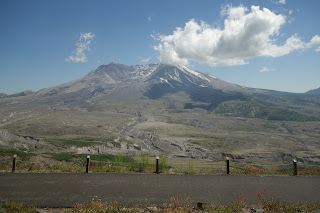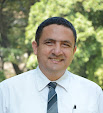A SENTIMENTAL JOURNEY TO KASMU
By Ajit Chaudhuri – August
2013
Introduction: This note is about a visit to Kasmu, Estonia, on 27th
April 2013.
I will begin with
events in the early 1930s, when a young lady in a coastal village in the
country of Estonia was the object of attraction for the village adventurer. Her
parents, obviously not enamoured of the prospects of this relationship, decided
to circumvent things by sending her to London to learn English. The law of
unintended consequences duly applied, she met an Indian medical student while
in London, and they fell in love and subsequently married in 1935. They
returned to India in 1938, the young medical student (by then a doctor) joined
the Indian Army Medical Corps and rose to become a General, and they had four
children – the youngest of whom is my mother. They retired in the town of
Dehradun, and he died in 1985, a little after their 50th wedding
anniversary. She lived on till 1996, never visiting her village or her country
(which in 1940 became part of the Soviet Union) again.
I was close to my
maternal grandparents and spent a lot of time with them (and later with my
grandmother). They were typical grandparents, I suppose – I was always sure of
my welcome, and there was always something good to eat in the house. My
grandfather was a typical military patriarch, and the only thing distinguishing
my grandmother from a fairly typical Bengali housewife was her light hair and
blue eyes. The eldest of my sisters, who was also close to them, said that she
also had a certain northern coldness – my grandfather was always delighted at
my unannounced visits, but like all Bengali men did nothing in the house; my
grandmother was never so overtly happy at them, but did all the work, the
additional cooking, cleaning and bed making, that made me comfortable. It was
only when she took out her photo albums and showed us pictures from her
childhood that we actually saw her animated.
She loved showing
these old black and white photos of her family and friends, and talking about
her childhood in the village Kasmu, her school and the various cultural
performances she took part in, and the times spent playing on the rocks along
the shores of the Baltic Sea with her friends Sigrid and Jus. She talked about
the Sea School in Kasmu, where her father and most men in her family had
trained to become ship captains. She talked about her visits to Tallinn, the
country’s capital city, usually done in an overnight sleigh ride, with all the
wonderment of a village child seeing the big city lights. She also saved up, to
my grandfather’s amusement, a Reader’s Digest article about Ahto Walter, her
adventurer admirer, who went on to set records in Atlantic crossings. Estonia,
in her descriptions, was a land of milk and honey.
 |
| The entrance to the Sea School (now Museum) at Kasmu |
But there was
sadness in her tone as well. She could never go back – the independent Estonia
she had grown up in did not exist – it was a corner outpost of the Soviet
Empire. Her mother, father (who died early) and stepfather were all dead. Those
of her relatives who could not escape to Finland or Sweden (both countries
across the Baltic from Kasmu) and become refugees in foreign lands were
systematically rounded up and shipped off to Siberia, where they died. There
was nothing to go back to!
 |
| My maternal grandparents (large photo), the brothers Jakob and Alexander Kaskni (right) and Nadezhda |
We, the elder grandchildren,
did not think too much of it – Estonia was always some faraway place that our
grandmother talked about, and nothing more. It was only when we saw her
happiness at Estonia regaining independence in 1991 – we were delighted that it
happened in her lifetime – that we realized that there was a side to her that
we did not know at all. It was after her death that I decided that the journey
to Kasmu was one pilgrimage I had to make.
 |
| The author in Tallinn |
Visiting Estonia
became a real possibility once it became a part of the Schengen Agreement (this
enables visa-free travel within member states), and I used the opportunity
provided by a visa to visit Germany (and present a paper at an academic
conference at Heidelberg University) to take a few days out for this. I tried
to take my mother along (she has never been), but she demurred – she did the
next best thing, however, and financed my trip (thanks Mum). I am not the first
in the family to have been – my wife, two sisters, a niece and two nephews have
preceded me there over the years. I arrived in Tallinn and spent a day
acclimatizing to the late northern winter before making a day trip to Kasmu to see
the house where she grew up in and the shores in which she played as a little
girl, and to say a short prayer at her family graveyard (where her father,
mother and relatives are buried) in the village. I was assisted in this
endeavour by my cousins by marriage, Helve and Arvo Saat from Tallinn, who
drove me there, took me around, translated for me, and then treated me to a
damn good lunch before bringing me back to Tallinn. Many thanks to them! All
photos are by Arvo, and, for the curious among you on these matters, the
glamorous lady by my side in some of them is Helve.
 |
| Helve and I at the door of the Sea School |
Kasmu Itself: The journey to Kasmu is a beautiful and pleasant one
– northeast along the highway to St. Petersburg, and then a turn westward just
before Rakvere to the Baltic coast – traversing temperate forests and the Lahemaa
National Park area before hitting the coastline and the two adjacent villages
of Vosu and Kasmu. Visiting the region was forbidden during Soviet rule for its
proximity to Finland. In April, it was a sleepy little village with no
restaurant, but I am told that things liven up in the summer months, when it
becomes a tourist hotspot and also the venue of an annual music festival.
The Sea School: It is here that I met my cousin Arne Viik, who runs
the Kasmu Museum that was the Sea School in my grandmother’s times. Her father,
Alexander Kaskni, was both a graduate of the school and later its principal,
and it is here that she was born. During the Soviet years, the building was
taken over by the Soviet border guards and used as a barrack.
 |
| Cousin Arne showing me photos of our common ancestors |
The museum itself
is a fascinating place that records Kasmu’s relationship with the sea with
dedication and commitment. Cousin Arne was in the process of writing a history
of the Sea School and a record of the many sea captains who had studied here,
and he mentioned that one of the few of whom he had no photos was Justin Lyschak
or my grandmother’s cousin and childhood playmate Jus. I was delighted to
arrange for a photo, available with my Aunt Niila in England, so that Uncle Jus
was appropriately recorded in the book.
 |
| Captain Justin Lyschak or Uncle Jus, who lived a life less ordinary |
I also discovered
that my grandfather had visited here with my grandmother in the 1930s, and had introduced himself
to his family-by-marriage. He was the first dark skinned person to visit the
village, and there was much curiosity about him at the time. Great-grandmother Nadezhda had already died by then, but she was famously quoted as saying "If I knew that Ira (my grandmother), who I sent to England to get away from the rascal Ahto Walter, would fall in love with an Indian, I would have let her marry Ahto!" before doing so.
 |
| My grandparents, photographed when they visited Kasmu in the mid-1930s |
My grandmother
had kept in touch with her friends, most of whom had settled in the USA, Canada
and Sweden, over the years, and had shared photographs that eventually found
their way into the Kasmu museum. It was especially touching to see photos of my
own childhood, photos that I had thought were long lost ,
stored carefully here.
 |
| Looking out at the sea on one of the rocks I knew so well |
From the Sea
School, looking out into the Kasmu Harbour was a weird experience – I knew all the
rocks from my grandmother’s photos and vivid descriptions, and I could almost
see a young girl and her two friends jumping around on them. I went around the
beach, climbed some of the rocks, and even wiggled my toes in the freezing
Baltic waters.
 |
| A view of Kasmu Harbour from a window in the Sea School |
The Kristenbrunn Residence: Alexander Kaskni died early, and his
wife, my great-grandmother Nadezhda, subsequently married Eduard Kristenbrunn. My
grandmother and her cousin Jus (Nadezhda’s sister and her husband both
contracted TB early and gave Jus over to Nadezhda to bring up before they died)
also moved to the Kristenbrunn residence. It is here that my grandparents
stayed when they visited Estonia in the 1930s, which was to be my grandmother’s
last visit to her watan. The
residence is now a writers’ home, or a place that writers come to for prolonged
periods of peace and quiet so that they can concentrate on their writing. When
my sister, niece and nephews visited, cousin Aarne, who was taking them around,
jokingly announced to the writers in residence that they would have to leave,
the original owners of the building had come to reclaim the property. My wife,
who travelled here with a friend while on an official visit to Sweden, even
stayed the night here – she visited in mid-winter when nothing was open.
 |
| The Kristenbrunn residence |
I was shown
around by one of the writers in residence, who also asked me to write something
in Hindi in the visitors’ book that they maintained.
 |
| Sitting at the table where my grandmother used to eat, with the writer in residence |
The Family Graveyard: One of the things my grandmother had done, once it
was possible to do (i.e. after the Russians had buggered off), was to have a
proper gravestone put on her father’s and uncle’s graves. The graveyard is
beside a Lutheran Church, reminding one of a time when Estonia was not the most
non-religious country in the world (it is now). I did a round around the yard
and spent some time reflecting by the graves of my ancestors.
 |
| A moment of reflection at Aleksander Kaskni's grave |
 |
| The stone mentions Ira Kaskni-Roy on the right hand corner |
Conclusions: The visit concluded with a wonderful lunch in the
neighbouring village of Vosu, washed down with Estonian beer, and a drive on
that beautiful road back to Tallinn. But I left wanting to do this again, with
my children, and with the nephews who have yet to make the journey, so that
they too recognize the part of themselves that is from this strange and faraway
land, and so that they too are acquainted with that wonderful lady, my
grandmother, and do not relegate her to just another name on a listing of
ancestors. I hope that all her Indian descendants get to make this journey once
in their lifetimes.

















